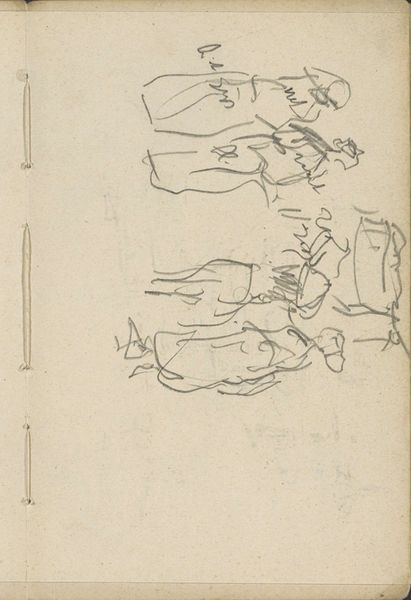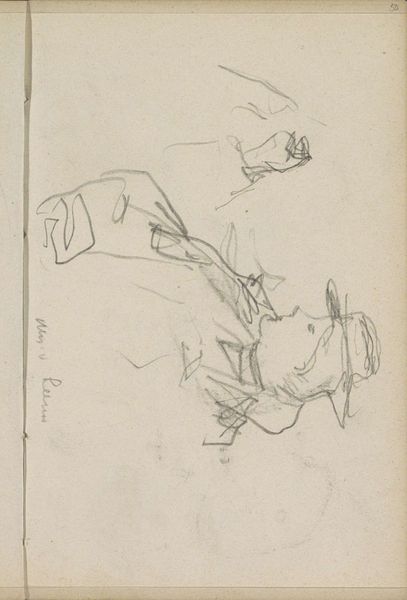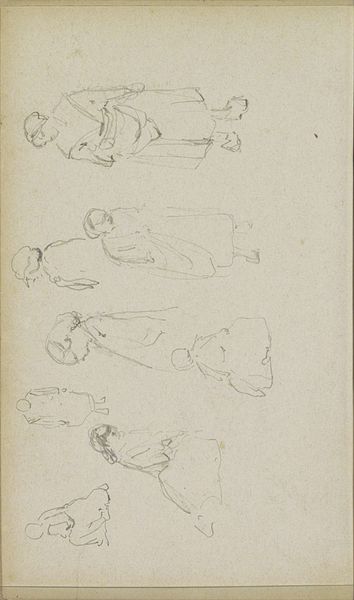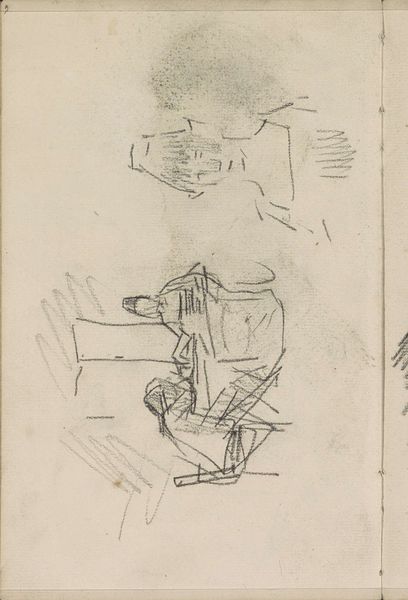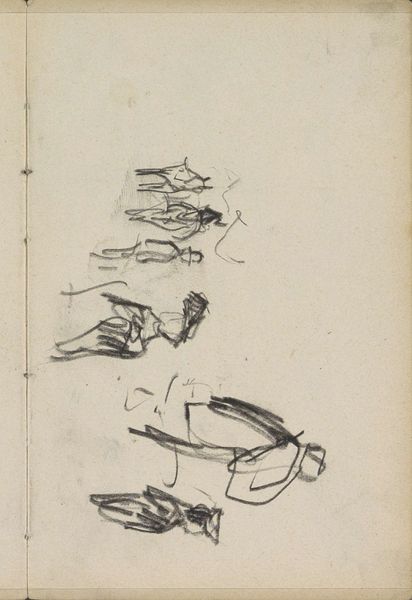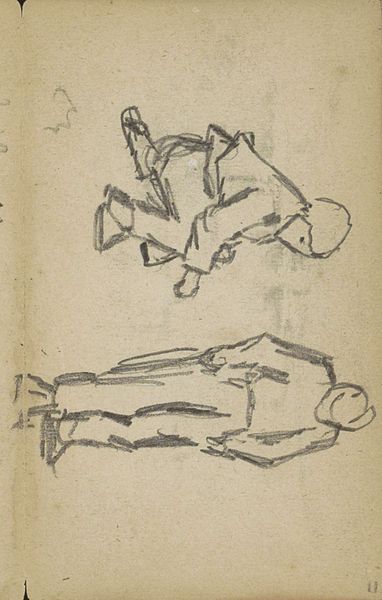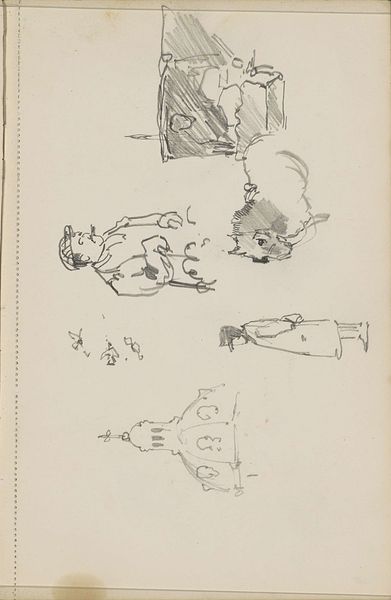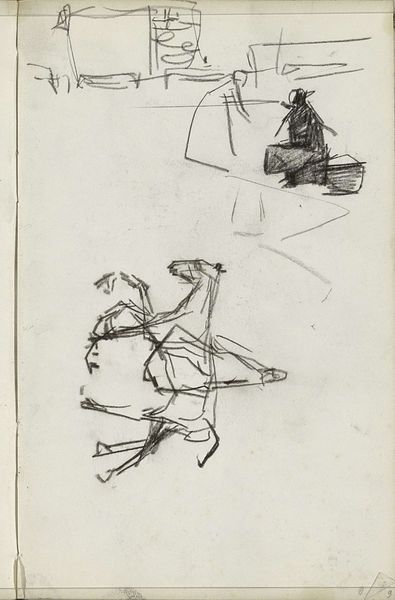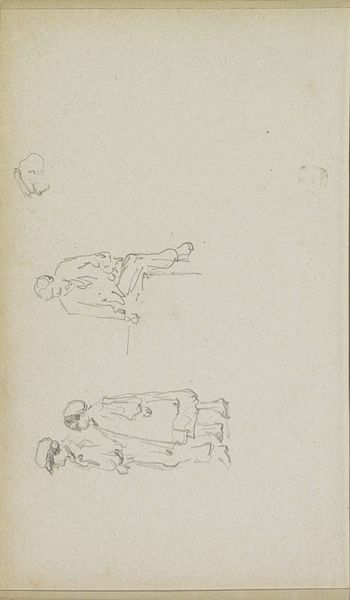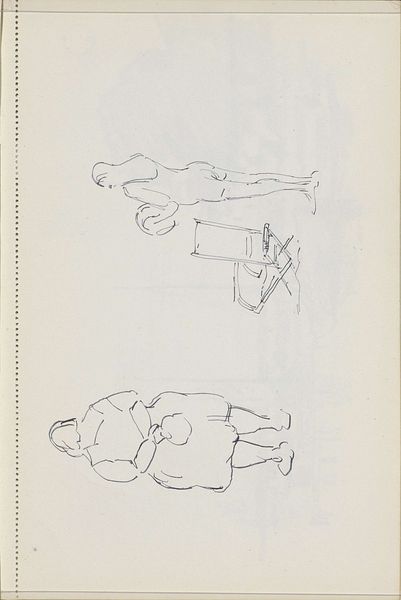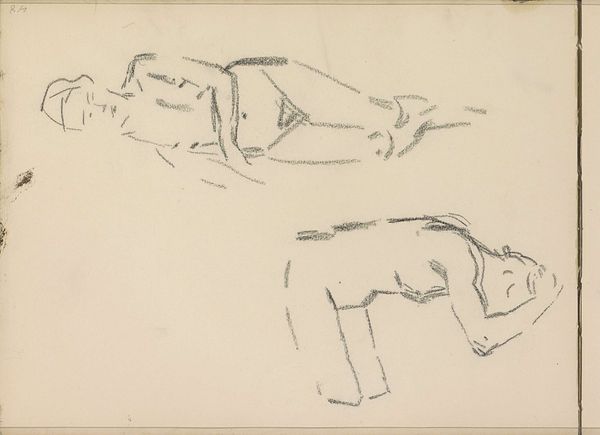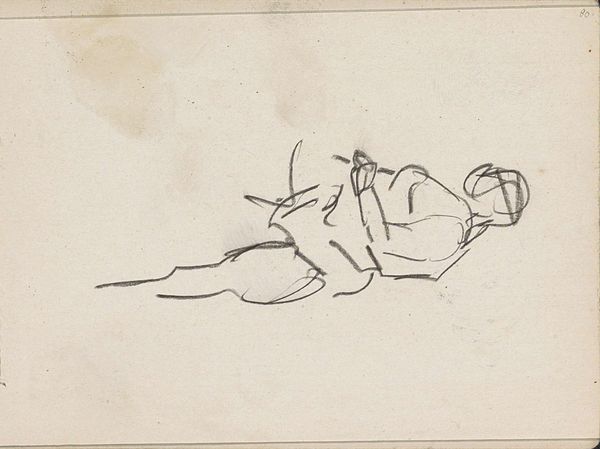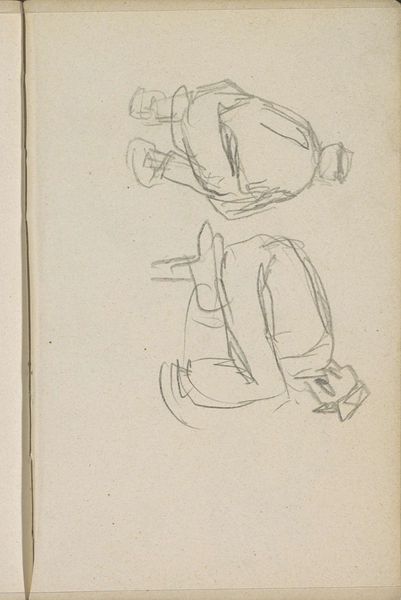
Copyright: Rijks Museum: Open Domain
Curator: The work before us is titled "Vier figuren," or "Four Figures," rendered in pencil by George Hendrik Breitner sometime between 1912 and 1919. It’s currently part of the Rijksmuseum’s collection. Editor: My immediate impression is one of transience. The sketchy lines create a sense of fleeting observation, as if Breitner captured these figures mid-stride. There's an immediacy here, a rawness. Curator: Indeed. Breitner was deeply invested in documenting the dynamism of city life, especially in Amsterdam. Note how the Impressionistic style – evident in the rapid, suggestive lines – emphasizes movement over static detail. It's as though he's distilling the essence of a moment. Editor: I find myself intrigued by the composition. The figures are arranged in two rows of two. What’s the spatial relationship between them, what's their intended meaning? The work’s strength lies not just in its illustrative quality but also in its careful orchestration of lines and the resulting negative space. Curator: And one should consider Breitner’s engagement with photography; his sketches often served as preliminary studies. Consider the layering of strokes, it suggests a depth achieved by overlaying tones through the varying pressure applied to the pencil, creating shading and giving shape to the otherwise ephemeral forms. Editor: And thinking historically, one can’t ignore how this fleeting quality echoes the accelerated pace of modern life at the time. This work offers a commentary on the experience of modernity; individuals navigating the increasingly complex urban landscape, figures in motion, becoming lost and anonymous amidst the bustling city crowd. Curator: Precisely. We also see, in these groupings, social stratification becoming palpable – perhaps capturing class distinctions. Each form echoes social position, or hints at shared, collective behaviors, made apparent through each gestural choice. Editor: Well, now, my fleeting initial assessment takes on an intriguing perspective on modern society—each figure capturing social context and experience, drawn together not just with the shared physicality but shared experience as a form of visual poetry! Curator: Yes, by the same token, the sketch becomes more than just a drawing but opens dialogues to explore identity, mobility and societal connection.
Comments
No comments
Be the first to comment and join the conversation on the ultimate creative platform.
